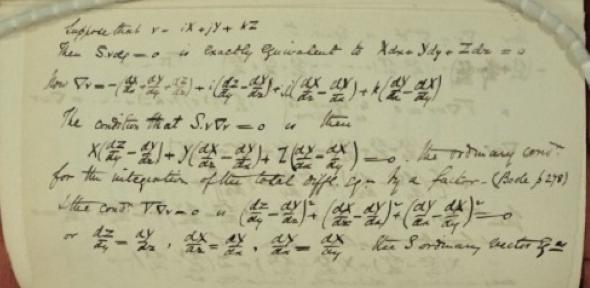
Sir George Howard Darwin, son of Charles Darwin and Emma Wedgwood, was born on 9th July 1845. He gained a mathematical scholarship to Trinity College Cambridge in 1864, graduating in 1868 as 2nd wrangler and winner of the 2nd Smith’s prize. Although he decided on a career in the law, and was called to the Bar in 1872, ill-health caused his return to Cambridge, where he devoted the rest of his life to mathematical science. Here he was instrumental in the teaching of advanced mathematics and the growth of the geophysical sciences. Through his work on the physics of the earth and tidal theory, he became a leading authority on tides, and amongst his many achievements he was Plumian Professor of Astronomy and Experimental Philosophy at Cambridge, and President of the Royal Astronomical Society, the Cambridge Philosophical Society, and the British Association for the Advancement of Science. In 1905 he became a knight commander of the Order of the Bath after his presidency of the BAAS on its tour of South Africa. He won both the Royal Medal (in 1884) and the highest scientific distinction, the Copley Medal of the Royal Society, in 1911. In 1907, Cambridge University Press sought to publish George Darwin’s Scientific Papers as a definitive collection of his works, to join the collected papers of such eminent scientists as George Stokes, James Clerk Maxwell, Lord Kelvin and J.C. Adams. The first 4 volumes were published under Darwin’s own supervision, the last in May 1911, with a 5th volume following in 1916. George Darwin died in Cambridge on 7th December 1912. His influence was perhaps best remembered by Sir Harold Jeffreys in 1924 in the Preface to The Earth, where he dedicated his classic work to Darwin, “father of modern geophysics and cosmogony.”
This display features items acquired in 2015 and once owned by George Darwin, along with related books already in the Whipple’s collections. They provide an insight into Darwin’s studies as a student and his later research at Cambridge, and into how he developed his theories of the physics of the earth, the evolution of the solar system and the nature of tides. Darwin’s links to other leading scientific figures also emerge, notably his close friendship with Lord Kelvin and his brother James. Some of these items are signed and dated by Darwin and many are annotated, allowing a glimpse of his reactions to other publications and of his own mathematical workings. All except one of these works were authored by graduates of Cambridge, allowing them to be viewed within the changing field of mathematical study at the University during the 19th century.
By Clare Matthews
On display February - April 2016
